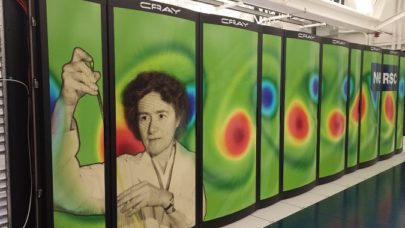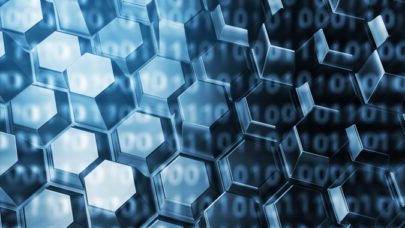
NERSC and the HPC Community Bid Farewell to Cori Supercomputer
May 17, 2023
After nearly seven years of service, thousands of user projects, and tens of billions of compute hours, the Cori supercomputer at the National Energy Research S Read more…

Supercomputers Project Wetter San Francisco Storms in a Future Climate
May 4, 2022
With climate change dramatically accelerating, scientists continue to struggle to predict the shape of a substantially warmer world. This is particularly true with regard to weather and storms, which – due to the granular, mercurial processes at play – elude climate scientists more than, say, ice melt projections. Recently, a climate study commissioned by the City and County of San Francisco... Read more…

What’s New in HPC Research: HipBone, GPU-Aware Asynchronous Tasks, Autotuning & More
March 10, 2022
In this regular feature, HPCwire highlights newly published research in the high-performance computing community and related domains. From parallel programmin Read more…

Supercomputers Illuminate Supernova Formation
March 6, 2021
Supernovae are perhaps the galaxy’s best fireworks shows, with dying stars’ death rattles coming in the form of unimaginably large explosions. Astrophysicis Read more…

Berkeley Lab Team Improves HPC Datacenter Efficiency with Analytics
February 25, 2020
As HPC datacenters scale up, improving efficiency is crucial to avoiding correspondingly large energy use (and the ensuing high costs and large carbon footprint Read more…

NERSC-9 Clues Found in NERSC 2017 Annual Report
October 8, 2018
If you’re eager to find out who’ll supply NERSC’s next-gen supercomputer, codenamed NERSC-9, here’s a project update to tide you over until the winning bid and system details are revealed. The upcoming system is referenced several times in the recently published 2017 NERSC annual report. Read more…

Data Management at NERSC in the Era of Petascale Deep Learning
May 9, 2018
Now that computer scientists at Lawrence Berkeley National Laboratory’s National Energy Research Scientific Computing Center (NERSC) have demonstrated 15 petaflops deep-learning training performance on the Cori supercomputer, the NERSC staff is working to address the data management issues that arise when running production deep-learning codes at such scale. Read more…

NERSC Cori Shows the World How Many-Cores for the Masses Works
April 21, 2017
As its mission, the high performance computing center for the U.S. Department of Energy Office of Science, NERSC (the National Energy Research Supercomputer Cen Read more…

- Click Here for More Headlines

Whitepaper
How Direct Liquid Cooling Improves Data Center Energy Efficiency
Data centers are experiencing increasing power consumption, space constraints and cooling demands due to the unprecedented computing power required by today’s chips and servers. HVAC cooling systems consume approximately 40% of a data center’s electricity. These systems traditionally use air conditioning, air handling and fans to cool the data center facility and IT equipment, ultimately resulting in high energy consumption and high carbon emissions. Data centers are moving to direct liquid cooled (DLC) systems to improve cooling efficiency thus lowering their PUE, operating expenses (OPEX) and carbon footprint.
This paper describes how CoolIT Systems (CoolIT) meets the need for improved energy efficiency in data centers and includes case studies that show how CoolIT’s DLC solutions improve energy efficiency, increase rack density, lower OPEX, and enable sustainability programs. CoolIT is the global market and innovation leader in scalable DLC solutions for the world’s most demanding computing environments. CoolIT’s end-to-end solutions meet the rising demand in cooling and the rising demand for energy efficiency.
Download Now
Sponsored by CoolIT
Whitepaper
Transforming Industrial and Automotive Manufacturing
Divergent Technologies developed a digital production system that can revolutionize automotive and industrial scale manufacturing. Divergent uses new manufacturing solutions and their Divergent Adaptive Production System (DAPS™) software to make vehicle manufacturing more efficient, less costly and decrease manufacturing waste by replacing existing design and production processes.
Divergent initially used on-premises workstations to run HPC simulations but faced challenges because their workstations could not achieve fast enough simulation times. Divergent also needed to free staff from managing the HPC system, CAE integration and IT update tasks.
Download Now
Sponsored by TotalCAE
Advanced Scale Career Development & Workforce Enhancement Center
Featured Advanced Scale Jobs:
HPCwire Resource Library
HPCwire Product Showcase
© 2024 HPCwire. All Rights Reserved. A Tabor Communications Publication
HPCwire is a registered trademark of Tabor Communications, Inc. Use of this site is governed by our Terms of Use and Privacy Policy.
Reproduction in whole or in part in any form or medium without express written permission of Tabor Communications, Inc. is prohibited.
























